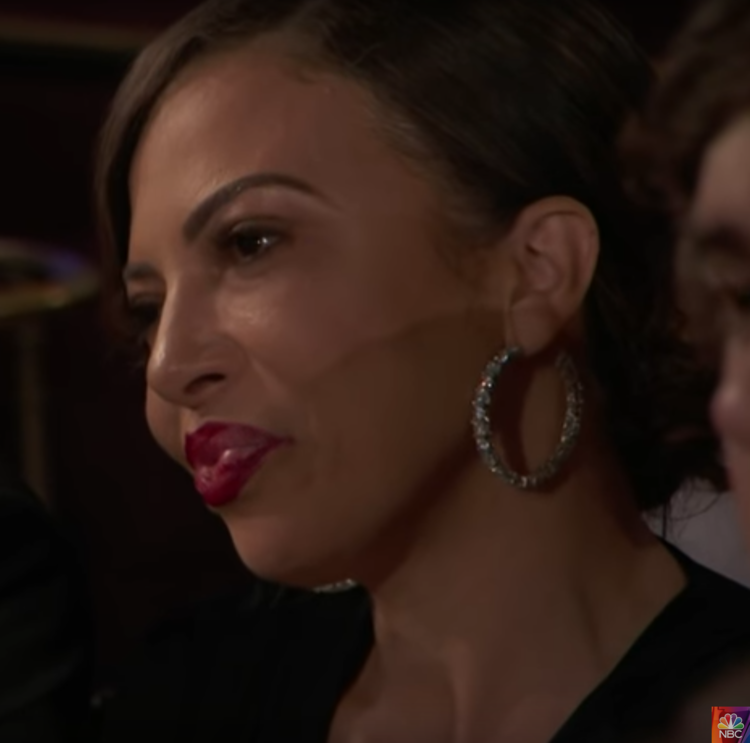Craft a Speech That Brings Down the House with Oprah Winfrey
This is the speech that Oprah Winfrey delivered at the 2018 Golden Globes, and it brought down the house. There’s a lot to be learned here, and in this post I reveal the key strategies and techniques Oprah used that add up to nine minutes of presentation genius. And, I keep it simple, so you’ll understand how you can incorporate these 5 keys into your own speeches. (I’ve noted them in upper case throughout.)
Oprah opens with a STORY. (Of course she does, lol. It’s one of the most powerful tools you’ve got, as I explain here and here.) But listen to it carefully. She doesn't just run through a series of events; instead, she uses precise, descriptive language to paint a picture. She’s not just watching t.v. - It’s 1964, and she’s a little girl sitting on the linoleum floor watching Sidney Poitier rise to receive his Academy Award. Portier isn’t just dressed up - he’s “elegant”, and he’s wearing a white tie. Then her mother arrives, “bone-tired from cleaning other people’s houses.” With all of these vivid details, we understand on a deeper level what it meant to her to see Poitier become the first black man to win an Academy for best actor.
Then she uses a “CIRCLING BACK” technique, in which she notes how, on this particular night, little girls are watching again, but now these girls are watching Oprah herself be the first black woman to receive the Cecil B. deMille award. Circling back is often used in conclusions, when the speaker brings us back to something that was said at the beginning. It’s a great way to tie everything together and finish it off with flair. I found it intriguing that Oprah uses this technique early on. In any case, the juxtaposition of these two”firsts” is powerful. Oprah gets a little emotional, and the audience gets a little excited.
Next, she moves to EXPRESSING GRATITUDE to those who supported her. She keeps the list short and moves through it quickly, which saves us from becoming bored, and then transitions ever so smoothly to not just thanking the press, but thanking them for their efforts during these “complicated times.” Onto this backdrop she underscores her main point, that “speaking your truth is the most powerful tool we all have.”
Before I go on, I want to point out a few things. First, gratitude is a theme to which Oprah returns again and again. The end result is that her AUDIENCE FEELS ACKNOWLEDGED AND VALUED, and she has subtly made them, and not herself, the star of the hour. Making your audience the star is a basic principle of public speaking that I mention in this blog post.
Second, her TRANSITIONS are worth a second look. She picks up a thread from what she was talking about and ties it seamlessly to a thread from what she is going to talk about next. In the instance above, she moves from all the other thank-yous to thanking the press, which she then links to the current political climate.
Orpah expresses GRATITUDE for all the women “who have endured” a long list of injustices, and TRANSITIONS (once again, seamlessly) into the STORY of Recy Taylor. I point out the transition again because seamless transitions like these are what help your audience follow along without having to think twice about what you said.
She uses the STORY of Recy Taylor to create an emotional foundation upon which expresses the dismal status quo, in which “women have not been heard or believed if they dared to speak their truth to the power of those men.” She then describes the better future, in which she emphasizes, “their time is up.” This short rallying cry brings the audience to their feet, cheering.
Orpah returns to the past and its dismal status quo, referencing Recy Taylor and Rosa Parks once again. Then she swings back to the better future which the #MeToo movement promises, and discusses how those who overcome are those who maintain hope. This moving back and forth between the old way and the new way is a specific SPEECH STRUCTURE revealed by Nancy Duarte and which you can read more about here.
In her closing, she CIRCLES BACK to the little girls who are watching, and offers them the hope of a better future, continuing with the SPEECH STRUCTURE I mentioned above. Once again, Oprah ACKNOWLEDGES those in the audience, men and women alike, who have fought and continue to fight to bring this new day into reality. At this point people are practically dancing in the aisles. I love seeing smiles on their faces as they realize how brilliantly she has nailed it.
The 5 takeaways for YOU are pretty straightforward.
1. Start with a vivid story, and throw in additional mini-stories to create more impact and help your audience remember your message.
2. Circle back at some point to something you said at the beginning. This creates the satisfying sensation that all of the pieces of your speech not only have value, but belong together. If you can circle back at the end, all the better.
3. Make your audience, or at least others (and not yourself) the star of the show by expressing gratitude and acknowledging their accomplishments.
4. Use well-constructed transitions to connect your points, finding a common idea that you can use as a link from what you were talking about to what you’re going to discuss next.
5. Consider using Nancy Duarte’s speech structure if what you want is a truly inspirational speech.
If you found this post inspiring, hit one of the buttons below so that your friends can be inspired, too!
If you’d like help creating your own inspirational speech, go here. I’d love to help you make a difference!




